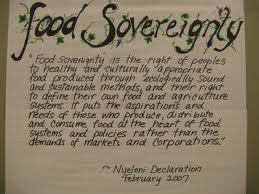 The present crisis is not only a financial one. It is a crisis of civilization. The convergence of long term contradictory processes in several levels (economic, demographic, ecological, etc.) has reduced capital's margin of maneuvering with historical progressive projection, opening the room for very painful situations for large segments of Earth's Population.
The present crisis is not only a financial one. It is a crisis of civilization. The convergence of long term contradictory processes in several levels (economic, demographic, ecological, etc.) has reduced capital's margin of maneuvering with historical progressive projection, opening the room for very painful situations for large segments of Earth's Population.The anti-fascist forces victory in the Second World War triggered the constitution of a series of regimes of accumulation with significant endogenous dynamics of growth based upon re-distributive patterns at the domestic and the international levels that expressed the new balance of power. The pervasive destruction of local food provision systems in favor of national structures linked to international markets of commodities under the norms and negotiations of GATT had a corresponding enhancement of macroeconomic and sectorial instruments of policy with different and contradictory degrees of sovereignty, within the Socio-technological framework of agro-Chemicalization and mechanization.
 The quarter of century long wave of high growth – high profits of capitalism under USA hegemony ended by the middle of the sixties, claiming for another set of technological and institutional arrangements conducive towards higher rates of profits for monopoly capital.Given the structural crisis of over-production and over-accumulation that even affected the rhythm of moral obsolescence and fixed capital rotation with not enough room for its full description, investment leanings favored speculative hypertrophy as overlapping networks of claims on uncertain future production.Being systemically counter-productive from profitability considerations, technical innovation, massive as it is, gradually opened room for archaic forms of exploitation that tended to reappear deferentially in center, periphery and semi-periphery, structuring a new wave of regressive re-distribution, "originant" accumulation and geographical siphoning out of value and resources. Market insufficiency end up "compensated" via debt, which converged with the needs for financial investment opportunities and de-regulation in a contest of the Bretton Woods System dismantling.The two main vectors of monopoly capital systemic profit improving, financialization and globalization, exacerbated capital unsustainability trends.The specific effects on food vulnerability for significant parts of the South appear opaque under conjectural conditions of favorable terms of exchange and hot money inflows. "Bublization" became more and more a structural feature, including commodity markets and, especially, food provision, involving increasing amounts of capital accumulation and more essential mechanisms of power reproduction among the high commands of the society.The financial implosion of the structural crisis concerned the core of monopoly capital into a crazy dynamics of further speculation in absence of reliable and sufficiently profitable productive options for investment. The "remedies" tend to push that speculative ammunition through colossal injections of out-of-the blue issued liquidity under the dollar global quasi-monopoly.The resultant metastasis of structural insolvability and the essential distortion of key price formation mechanism shed high levels of irreversibility at a global dimension without precedents of local reproduction engagement ever. The possibilities of a very grave food crisis triggered by any factor under this speculative construction are imminent. (Reference: This article written by Pedro Paez Perez)
The quarter of century long wave of high growth – high profits of capitalism under USA hegemony ended by the middle of the sixties, claiming for another set of technological and institutional arrangements conducive towards higher rates of profits for monopoly capital.Given the structural crisis of over-production and over-accumulation that even affected the rhythm of moral obsolescence and fixed capital rotation with not enough room for its full description, investment leanings favored speculative hypertrophy as overlapping networks of claims on uncertain future production.Being systemically counter-productive from profitability considerations, technical innovation, massive as it is, gradually opened room for archaic forms of exploitation that tended to reappear deferentially in center, periphery and semi-periphery, structuring a new wave of regressive re-distribution, "originant" accumulation and geographical siphoning out of value and resources. Market insufficiency end up "compensated" via debt, which converged with the needs for financial investment opportunities and de-regulation in a contest of the Bretton Woods System dismantling.The two main vectors of monopoly capital systemic profit improving, financialization and globalization, exacerbated capital unsustainability trends.The specific effects on food vulnerability for significant parts of the South appear opaque under conjectural conditions of favorable terms of exchange and hot money inflows. "Bublization" became more and more a structural feature, including commodity markets and, especially, food provision, involving increasing amounts of capital accumulation and more essential mechanisms of power reproduction among the high commands of the society.The financial implosion of the structural crisis concerned the core of monopoly capital into a crazy dynamics of further speculation in absence of reliable and sufficiently profitable productive options for investment. The "remedies" tend to push that speculative ammunition through colossal injections of out-of-the blue issued liquidity under the dollar global quasi-monopoly.The resultant metastasis of structural insolvability and the essential distortion of key price formation mechanism shed high levels of irreversibility at a global dimension without precedents of local reproduction engagement ever. The possibilities of a very grave food crisis triggered by any factor under this speculative construction are imminent. (Reference: This article written by Pedro Paez Perez)
